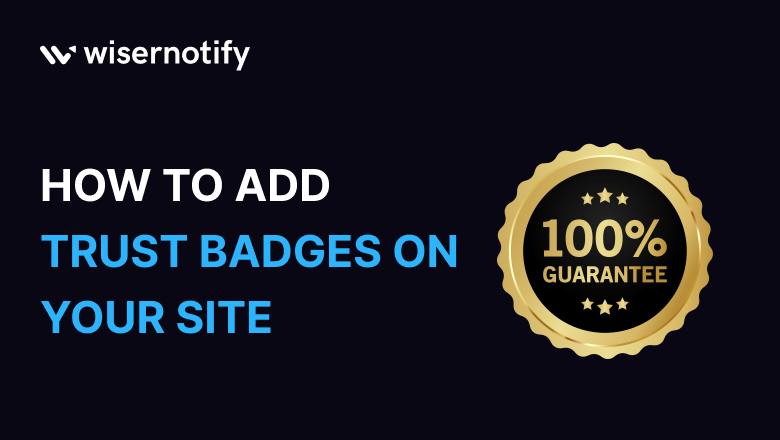Want your ecommerce store to be more trustworthy?
Adding a trust badge to your website is the secret sauce. These small icons, displaying secure payment methods or guarantees, reassure visitors that your site is safe and reliable.
Imagine you’re shopping online: wouldn’t you feel more comfortable seeing a padlock icon or a “100% Satisfaction Guaranteed” badge?
These badges act like virtual handshakes, instantly building trust and credibility with your customers before they can even make a purchase.
Studies show that 75% of online shoppers are more likely to trust a website that displays such badges.
Let’s explore how you can easily add these badges to your website to enhance customer confidence and drive sales.
Build trust & FOMO
Highlight real-time activities like reviews, sales & sign-ups.
What are Trust Badges?
Trust badges are symbols or icons displayed on websites to reassure visitors that the site is trustworthy and secure. They help build confidence, especially among online shoppers who are cautious about sharing personal information. Trust badges often include icons like padlocks, credit card logos, or security certificates.
These badges signal to customers that their information will be safe if they make a purchase or share personal details on the site. Trust badges can also indicate that the website meets certain standards or has been verified by trusted organizations.
How Trust Badges Affect Consumer Behavior and Increase Conversion
Trust badges significantly influence consumer behavior by providing a sense of security and reliability on ecommerce sites. When customers see trust badges, they feel more confident about sharing their personal and payment information, knowing that the site is secure.
This increased confidence reduces hesitation and cart abandonment, leading to higher conversion rates. Trust badges also help establish credibility, making customers more likely to complete their purchases.
Also See: Understanding Digital Badges: A Simple & Quick Guide
How to Add Trust Badges on Your Site or Store
When you shop online, have you ever noticed those little badges or site seals on websites that say things like “Secure Checkout” or “Money Back Guarantee”?
These are trust badges, and they can help you feel safe entering your credit card details or trusting a website with your personal information.
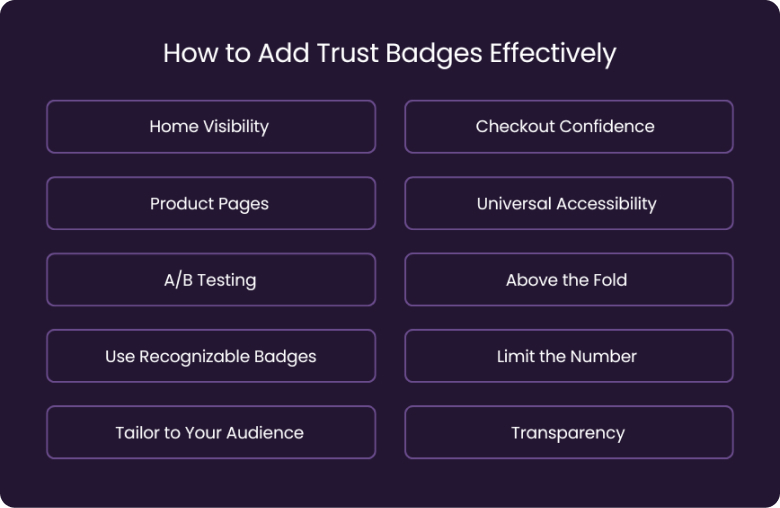
For online retailers, trust badges are like digital endorsements that reassure ecommerce customers about their credibility and security. Placing these badges strategically can make a big difference in how customers perceive your website and whether they feel comfortable making a purchase.
Here are some best practices for placing trust badges.
1. Home Visibility
- Place trust badges prominently on your homepage to quickly build trust with visitors.
- Ensure badges from third-party endorsements and security providers are visible to instill confidence in online security.
- Use badges like site seals, lock icons, and SSL certificates to highlight a safe browsing experience.
- This assures new visitors of your site’s reliability from the start.
2. Checkout Confidence
- Display trust badges at the checkout to reassure potential customers about the safety of their transactions.
- Include badges from recognized third-party company providers like Stripe and PayPal.
- Highlight free shipping badge and money back guarantee badge to reduce shopping cart abandonment and increase sales.
- This reassures customers that their payment information is secure, encouraging them to complete their purchase without hesitation.
3. Product Pages
- Add trust badges to the product page to build trust and credibility for each item.
- Show badges related to product quality, and accepted payment methods.
- Make sure badges are visible near the “Add to Cart” button to leverage trust badges effectively.
- This helps in converting potential buyers into customers.
4. Universal Accessibility
- Place trust badges in the footer of every page to ensure they are always visible.
- Use a few trust badges that are most relevant to your audience and online business.
- Ensure badges are compatible with different devices and internet connection speeds for all customers.
- This makes your credibility accessible to everyone.
5. A/B Testing
- Conduct A/B testing to find the most effective placement for free trust badges on your ecommerce site.
- Test different badge designs, locations, and combinations to see which boosts trust and sales the most.
- Regularly update and test new badges to keep your site current and trustworthy.
- This helps you determine which placement or design resonates best with your audience and improves conversion rates.
6. Above the Fold
- Position key trust badges above the fold to catch the eye of site visitor immediately.
- Use recognizable badges from well-known SSL certificate providers and third-party endorsements.
- Keep the number of badges above the fold limited to avoid clutter and maintain a clean look.
- This ensures they’re seen immediately, reinforcing trust right from the start.
7. Use Recognizable Badges
- Use badges that your audience will recognize and trust, like Verisign trust badges and other well-known security badges.
- Display badges that indicate secure checkout, free shipping, and third-party approvals.
- Recognizable badges increase brand recognition and build trust quickly.
- Familiar symbols like PayPal, Visa, or McAfee can quickly convey trustworthiness.
8. Limit the Number
- Avoid overwhelming visitors with too many trust badges, focus on a few key badges.
- Choose badges that cover various aspects of trust, such as best price guarantees.
- A limited number of well-placed badges can effectively instill trust without distracting site visitors.
9. Tailor to Your Audience
- Choose trust badges that resonate with your target audience and their concerns.
- For audiences concerned with costs, emphasize free shipping and best price guarantees.
10. Transparency
- Be transparent about what each trust badge means and who endorses it.
- Provide information on third-party badges and why they are trustworthy.
- Transparency about badges helps build trust and confidence in your ecommerce store.
Benefits of Using Trust Badges in Your Online Store
Trust badges can significantly boost confidence among your online store visitors. These small icons or logos from recognized site security providers or payment processors reassure customers that their information is safe and transactions are secure.
This sense of security can lead to higher conversion rates and increased sales, as customers are more likely to complete their purchases without hesitation.
By prominently displaying trust badge throughout your website, especially on checkout pages, you can build credibility and trust with your audience, encouraging repeat business and fostering a positive reputation online.
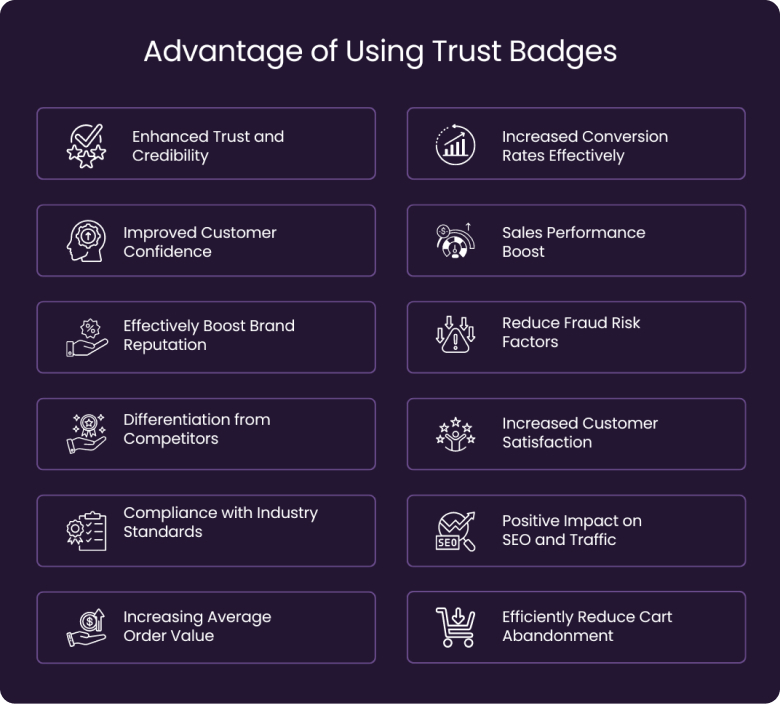
Let’s see some benefits of using trust badges in your ecommerce store.
Enhanced Trust and Credibility
- 85% of online shoppers avoid unsecured websites.
- Trust badges like SSL certificates and safe checkout badges reassure customers about your site’s security and reliability.
- Customers feel safer sharing their credit card details and personal information, reducing concerns about security.
- Positive shopping experiences lead to repeat business and customer loyalty.
Increased Conversion Rates
- Displaying trust badges prominently increases conversion rates by up to 30%.
- Trust badge on product pages and checkout pages reduce shopping cart abandonment rates.
- Customers are more likely to complete purchases when they see familiar badges like PayPal, Verisign trust badge, or SSL.
- Higher conversions mean more increase sales and revenue for your store.
Improved Customer Confidence
- Badges such as money-back guarantee badges and free shipping badges instill trust in potential customers.
- They know they can shop with peace of mind knowing they have options if something goes wrong.
Boosted Sales
- 78% of shoppers are more likely to shop at a site offering free shipping.
- Trust badge signal reliability and professionalism, encouraging more online purchases.
- Customers are more inclined to buy from sites they trust, which leads to higher sales.
Better Brand Reputation
- 84% of people will not make a purchase if they don’t trust the site with their data.
- Displaying badges from recognized payment providers and security companies enhances your brand’s credibility.
- Customers associate your brand with security and quality service, improving overall brand perception.
Reduce Risk of Fraud
- SSL certificate and secure checkout badges protect against fraudulent activities.
- Customers are less likely to encounter phishing or data breaches, fostering a safer shopping environment.
Differentiation from Competitors
- Displaying trust badge sets your online store apart in a competitive market.
- Using unique trust badges or showcasing specific guarantees like best price or money-back options sets you apart.
- It helps customers perceive your store as more reliable compared to others without visible trust indicators.
Increased Customer Satisfaction
- Trust badge indicate your commitment to satisfaction and security.
- Positive shopping experiences lead to repeat business and referrals, further enhancing customer loyalty.
Compliance with Industry Standards
- Displaying relevant trust badge ensures your store meets industry standards for security and payment processing.
- It builds confidence with customers who prioritize compliance and trustworthiness.
Positive Impact on SEO and Traffic
- Trust badges from recognized providers can improve your site’s SEO ranking.
- Positive customer reviews and trust signals contribute to better search visibility.
- Trust badges can indirectly improve your site’s SEO by increasing time spent on your site and reducing bounce rates.
- Higher trust levels can lead to more organic referrals and better search engine rankings over time.
Increasing Average Order Value
- Trust badges can influence customers to add more items to their carts.
- Assurance of security and reliability encourages larger purchases.
- Upselling and cross-selling strategies can capitalize on increased customer confidence.
- Enhanced trust often correlates with higher spending per transaction.
Supporting Regulatory Compliance
- Certain trust badges signify compliance with legal and regulatory standards.
- Displaying these badges demonstrates your commitment to data protection laws.
- Compliance builds trust with customers who prioritize privacy and security.
- Avoiding legal issues associated with non-compliance protects your business reputation.
Reducing Cart Abandonment
- Trust badges reassure customers about the safety of their transactions.
- Visible badges near checkout buttons remind shoppers of your site’s security measures.
- Addressing security concerns proactively reduces abandonment rates.
- Improved trust leads to fewer abandoned carts and higher completion rates.
- 17% of shoppers abandon carts due to security concerns.
Let’s explore different types of trust badges commonly used on ecommerce sites.
Build trust & FOMO
Highlight real-time activities like reviews, sales & sign-ups.
5 Different Types of Trust Badges to Use
1. SSL Trust Badges
SSL Badges indicate that a website uses encryption to protect data transmitted between the user’s browser and the website server.
Often displayed near checkout pages and login screens of websites to reassure users that their personal information is secure.
Protects sensitive information like card details from being intercepted by hackers.
Example: The green padlock icon next to the URL in browsers or badges like “SSL Secured” or “Secure Site”.
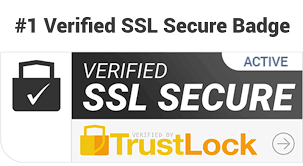
See More: Top 10 Trust Badges to Increase Conversion Rates
2. Site Security Trust Badge
These badges signify that a website has security measures in place beyond SSL, such as firewalls and malware protection.
Displayed on homepages or footer sections of websites to build trust with visitors concerned about overall site security.
Example: Badges like “Secured by McAfee” or “Norton Secured”.

3. Money Back Guarantee Badge
Money Back Guarantee badges promise a refund if customers are not satisfied with their purchase within a specified period.
Reduces perceived risk for customers trying a new product or service.
Commonly placed on product page or near purchase buttons to reassure potential customers about the quality of the product.
Example: “30-Day Money Back Guarantee” badge or similar assurances.

4. Free Shipping Trust Badges
Free shipping trust badge indicates that shipping costs are free for purchases made on the website.
Encourages customers to complete purchases without fear of hidden charges.
Often seen on product page, shopping carts, or homepage banners to attract customers looking for cost-effective shopping options.
Example: “Offer Free Shipping on All Orders” badge.

5. Secure Payment Badge
Secure Payment badges assure customers that their payment information is protected during transactions.
Displayed prominently on checkout page and near payment options to encourage secure transactions.
Example: “Secure Payment Gateway” badge or icons of trusted payment processors like Visa, MasterCard, or PayPal.
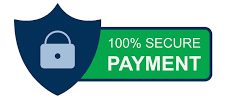
Conclusion
Trust badges play a crucial role in building customer confidence on websites. They signal to visitors that the site is safe, secure, and reliable, which can lead to higher conversion rates. These small icons reassure visitors that their information is safe, purchases are secure, and transactions are reliable.
Trust badge are especially important for e-commerce sites where users share sensitive information. Remember to choose badges that are relevant to your business and align with your customer’s concerns, such as security, payment methods, or guarantees.
